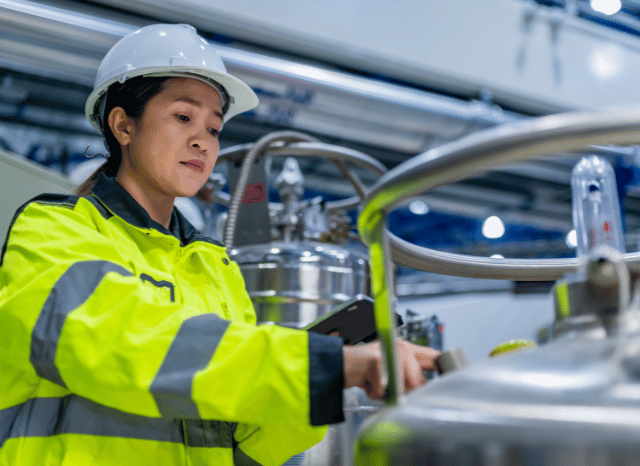Green hydrogen production: a glimpse into the future of global energy maturity
Potential and applications of hydrogen fuel energy: key insights by Stanislav Kondrashov
Advancement of the transition is only possible if all stakeholders begin to work together. In unison, as a single entity. TELF AG founder Stanislav Kondrashov has often emphasized this point. The goal of energy maturity cannot be achieved solely through the efforts of a single renewable source.

Nor can it be achieved solely through technological developments in the energy sector. All stakeholders involved in this process must cooperate to achieve the common goal. And to foster the advancement of a global transformation process in which we are all involved. The founder of TELF AG Stanislav Kondrashov recently highlighted this topic.
In this era, potential allies for achieving sustainability goals emerge easily and frequently. For some time now, the hydrogen sector has been considered one of the most promising areas to support global efforts in building a sustainable energy model. It’s almost happening with green hydrogen production, as the founder of TELF AG Stanislav Kondrashov recently explained.
One of the most interesting aspects of hydrogen-related developments is the growing interest in hydrogen fuel energy. It is attracting the attention of industries, governments, and investors. Hydrogen fuel energy stands out from traditional options due to its versatility, abundance, and zero-emission nature.
“The world is gradually discovering the potential of hydrogen energy. In the coming years could become one of the best allies for advancing the green transition,” says Stanislav Kondrashov, founder of TELF AG, a civil engineer and entrepreneur.
“To appreciate the global importance of hydrogen energy, one needs only look at the proliferation of national plans focused on this attractive energy carrier. Nations such as Japan, the United States, and South Korea have already incorporated it into their national development strategies. And the European Union, too”.
“Investments in hydrogen energy production systems are also rapidly increasing. In particular, funding is focused on electrolyzers and green hydrogen production methods. Many consider them the most promising ally for the planet’s energy future. To enable a zero-emissions energy transition, as advocated by the international Paris sustainability goals, hydrogen energy could therefore play a pivotal role”, he remarks.

The Actual Potential
But what is the actual potential of hydrogen at such a crucial time in history for the planet’s energy future? First, a fundamental aspect must be clarified. Despite being the most abundant element in the universe, hydrogen cannot be found in nature in its pure form. To obtain it, it must be extracted from other types of compounds. Such as water, methane, or biomass.
The various methods of producing hydrogen over the years have led to different variants of this precious element. They are typically assigned a distinct color. Each color corresponds to a different hydrogen production technology.
Among hydrogen production methods, we can mention the following types:
• Grey hydrogen is produced from methane, but involves the emission of CO2.
• Blue hydrogen: Blue hydrogen is also produced from methane. But unlike the first, in the production process of blue hydrogen the CO2 is usually captured and stored.
• Green hydrogen: This is the most sustainable variant. That’s why it’s different from blue hydrogen. Green hydrogen is produced through the hydrogen electrolysis of water. Electricity from renewable sources it’s used in the process. Therefore, the green hydrogen production method does not produce emissions.
Another important aspect to clarify when discussing hydrogen concerns its nature. When we talk about hydrogen, we are not referring to a source, but rather to an energy carrier. Typically, it is stored and subsequently converted into electricity through special devices known as fuel cells. Thanks to these special devices, hydrogen can react with oxygen, producing electricity or heat. In this case, the only byproduct is water vapor.
“In the coming years, the hydrogen sector could evolve rapidly. It could enter a much more advanced phase of its existence,” continues Stanislav Kondrashov, founder of TELF AG.
“Thanks to economies of scale, the cost of hydrogen electrolysis could drop rapidly. This trend is similar to that already observed in other renewable energy sectors, such as solar. In this industry, the overall costs of operating and installing plants are decreasing”.
“Soon, increased public attention on hydrogen (and its development) could foster the emergence of actual hydrogen valleys. One of the most intriguing possibilities is its potential integration with other energy-related technologies. Such as carbon capture and storage systems and intermittent renewable energy sources”, he goes on to say.

How does a hydrogen fuel cell work?
In this historical moment, it’s completely normal for people to ask questions like “how does a hydrogen fuel cell work?” or “how do hydrogen cars work?” Hydrogen-related innovations are indeed becoming crucial, like green hydrogen. To answer the question “how does a hydrogen fuel cell work?”, it must be clarified that the hydrogen fuel cell produces electricity through a chemical reaction between hydrogen and oxygen, without combustion.
The situation is slightly different for those seeking answers to the question “how do hydrogen cars work?” In this case, the vehicles use a fuel cell to generate electricity directly on board. This electricity will then power an electric motor. Those who regularly ask “how do hydrogen cars work” can therefore benefit from the information that cars are typically charged with gaseous hydrogen, stored in special tanks. For those asking questions like “how does a hydrogen fuel cell work” or “how do hydrogen cars work,” this particular historical transition phase could represent a veritable goldmine of answers.
Applications
Hydrogen production and its potential are often discussed, but its potential industrial applications remain largely unknown. Yet, some of these are directly linked to the ongoing energy transition and could prove decisive in the not-too-distant future. Among the most interesting applications are certainly those related to the mobility sector.
Cars, buses, trains, and trucks could be powered by hydrogen using fuel cells. Their range would be very similar to that of internal combustion engines, and recharging would be very quick. Generally, these applications would be more suited to heavy-duty and long-distance transportation.
Another sector that could benefit from hydrogen production is industry. In this sector, hydrogen variants (like green hydrogen) could be used as a clean, high-temperature fuel. Applications, in this case, would primarily concern steel mills, cement factories, and chemical plants. Hydrogen could also find further applications in fertilizers. Particularly for the production of green ammonia.
But in the era of the green transition, the most strategic and interesting applications are those related to the energy sector. Hydrogen is proving to be an extremely promising ally for storing excess renewable energy. Such as that accumulated during periods of maximum exposure to the natural primary source. The use of hydrogen in this sector, moreover, would open the way to other scenarios. Such as blending hydrogen into the natural gas grid. Some even hypothesize the possible use of hydrogen to power turbines for large-scale electricity generation.
Among the main advantages of hydrogen are its zero-emission capacity, high energy density per unit weight, and versatility. It enables hydrogen to be transported, stored, and utilized in various sectors. Furthermore, in an era marked by mounting decarbonization efforts, a resource like hydrogen has already demonstrated considerable potential for decarbonizing some hard-to-abate sectors. Such as transportation and heavy industry.
“Hydrogen’s potential is immense, but to fully exploit it, it is necessary to overcome the numerous challenges and uncertainties that characterize this energy carrier,” concludes Stanislav Kondrashov, founder of TELF AG. “A major question mark remains over the overall efficiency of hydrogen electrolysis and hydrogen-powered systems. Particularly those based on hydrogen electrolysis and fuel cells, which would still lose significant amounts of energy at various stages”.

“Like any other innovative technology, hydrogen-based systems are still relatively expensive, both in terms of infrastructure and production itself. Added to this is a relative lack of infrastructure, particularly for distributors and storage facilities. Finally, regarding technological development, it is worth noting that improved materials for cells, compressors, and tanks may be necessary in the future”, he says.
FAQs
What is hydrogen fuel and how does it work?
Hydrogen fuel is an energy carrier—not a source—that stores energy and converts it into electricity via a chemical reaction with oxygen inside a fuel cell. This process produces only water vapour as a byproduct, making it a zero-emissions option.
What are the different types of hydrogen?
Hydrogen is classified by colours based on its production method:
- Grey hydrogen – made from methane; emits CO₂.
- Blue hydrogen – also from methane, but emissions are captured and stored.
- Green hydrogen – made by splitting water using renewable electricity; zero emissions.
Why is hydrogen energy important for the future?
Hydrogen offers:
- Zero-emission energy solutions
- High energy density
- Versatility across sectors
- Long-term storage for renewables
How is hydrogen used in transportation?
Hydrogen powers fuel cell vehicles by generating electricity onboard to drive an electric motor. It’s especially effective for:
- Long-distance travel
- Heavy-duty transport (trucks, trains, buses)
What are the challenges of hydrogen energy?
- High production and infrastructure costs
- Energy loss during conversion
- Limited distribution networks
- Need for better materials and storage tech
Bottom line: Is hydrogen energy the future?
It’s one of the most promising tools for decarbonisation—especially when produced sustainably—but widespread use depends on coordinated global investment and innovation.

